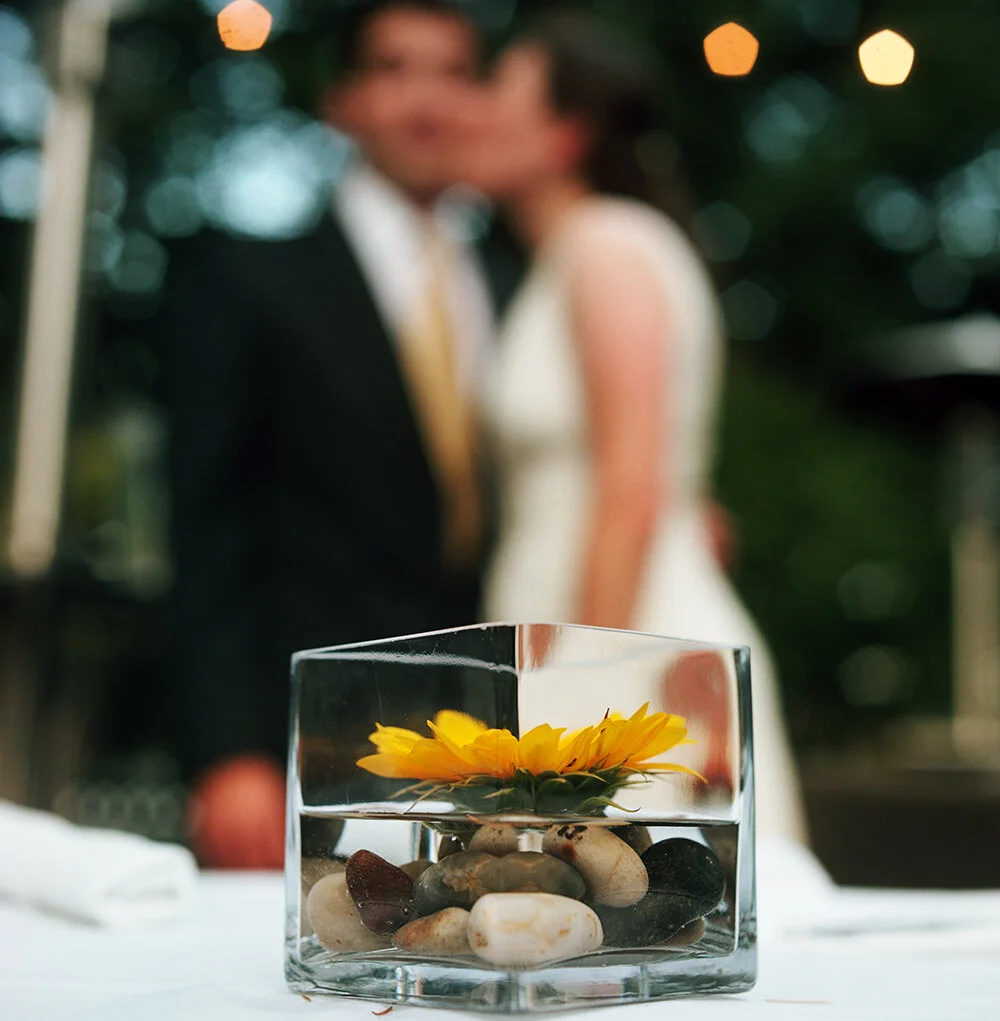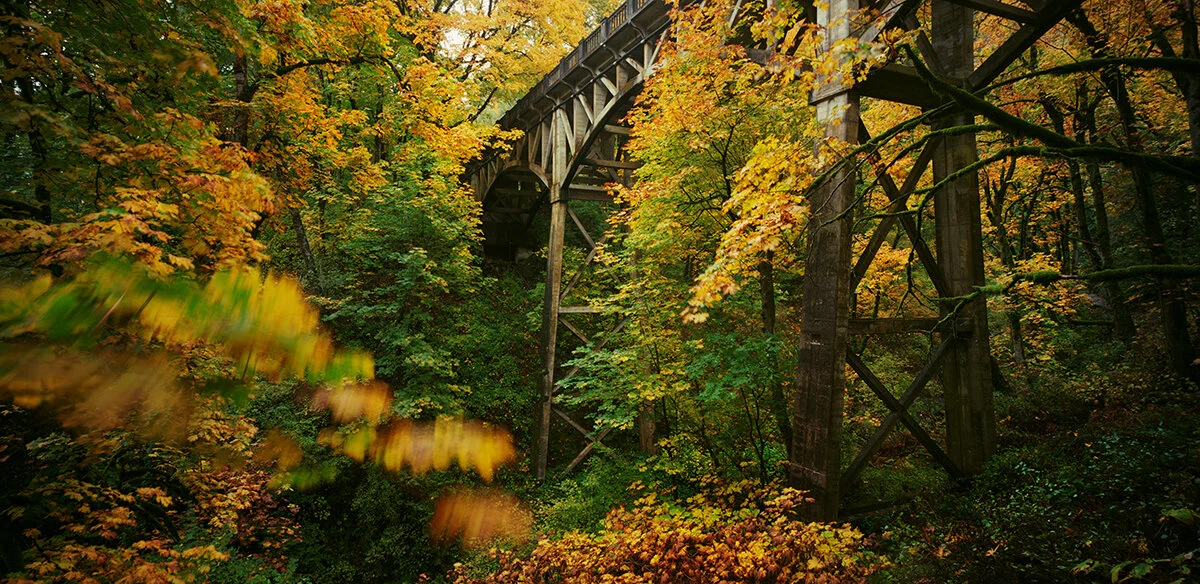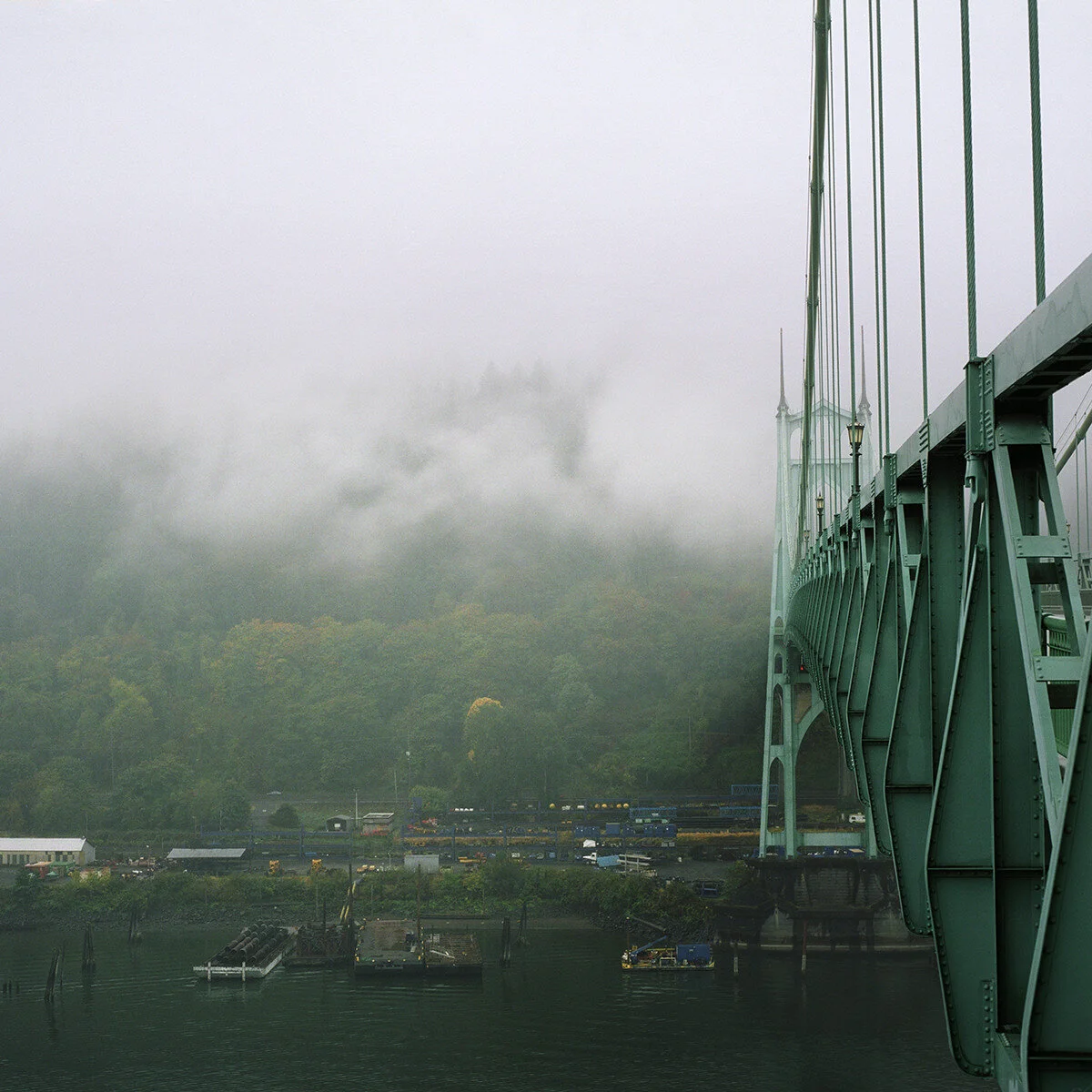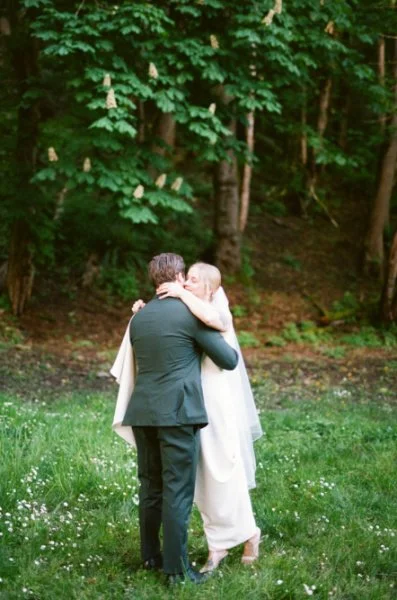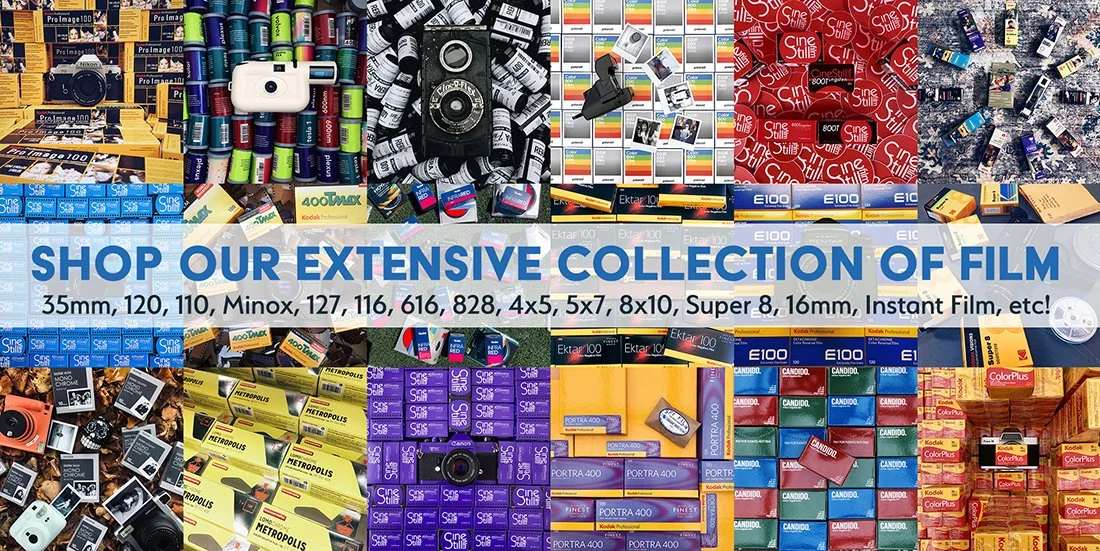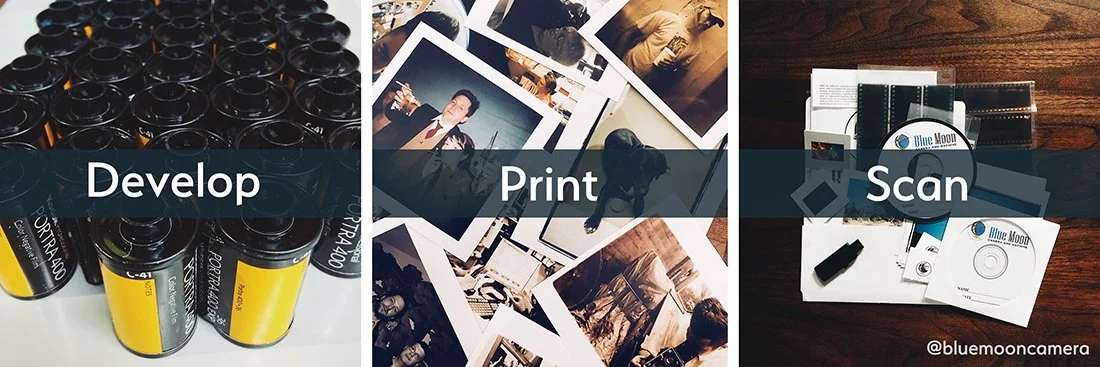Film Friday - November 21st, 2025. Kodak Portra 160 Film Review
We implied in our Film Friday review of Kodak Portra 400 that that film is pretty much a perfect color film, so you’ll hopefully understand and forgive us if we start off this Film Friday entry by stating that Portra 160 is a more perfect film. As the lowest ISO of all the Kodak Portra films, it has all the wonderful qualities of Portra 400 but with significantly finer grain. But we are getting ahead of ourselves.
Kodak gifted film photographers of the world the Portra family of film in 1998. All three speeds (160, 400 and 800) were introduced together and that is the range we still enjoy to this day. Originally the Portra films were broken up into two variations. A photographer could choose between Portra NC (for neutral or natural color) or VC (vivid color). Later, and only briefly, a UC (ultra color) joined the gang. As you can deduce, these variants generally turned up or down the amount of contrast and saturation Portra had. Heading out to shoot a wedding in direct sunlight? You probably wanted some Portra 160NC. But taking a trip to seem some fall foliage? In that case Portra 160VC would likely have been your preference. Film technology is an ever-evolving science though and in 2010-2011 Kodak made the decision to combine the NC and VC branches into a single film, splitting the differences between them. The new version of Portra now had more contrast and saturation than NC, but less so than VC. At the same time, new film grain technology was incorporated that made Portra even smoother, more detailed, and cleaner of grain. The film also benefited from optimizing it for film scanners. And that is where we are today folks. Over twenty years after its introduction, we have a Portra film that is at the peak of its game. It does everything well and can be used for virtually any subject matter.
Kodak Portra is the go-to film for professional wedding photographers, and for many great reasons. Image made with a Hasselblad 500C and Proxar 0,5 filter.
The best place to start in praising Kodak Portra 160 is with its rendition of color and overall color palette. As its name implies, this is the film for portraiture work. Want pleasing, accurate, even, predictable, gentle, smooth skin tones? Load your camera with Kodak Portra. Mission accomplished. That is why Kodak Portra 160, along with 400 and 800, are the most popular films for wedding, fashion and lifestyle photographers. Your subjects will look their best with Portra film, and when you have the pressure of a wedding bearing down on you, that is an important reassurance to have. But portraiture isn’t the only thing Portra 160 is good, it is pretty good at everything else too. Landscapes? Sure, why not! Portra 160 is not nearly as saturated or fine grained as Ektar 100, but it definitely holds its own doing landscape work. While its colors may not pop off the screen or print, they will be quite accurate. Same with cityscape, street photography, still life, and product photography. In all these cases, Portra 160 will deliver consistently accurate color redolent with subtle nuance.
While many landscape photographers reach for Kodak Ektar 100 as their scenic film, Kodak Portra 160 has no qualms about making excellent landscape images itself. Image made with a Horseman SW612.
After praise for Portra 160’s color, it’s next selling point is its fine grain. Portra 160 has a print grain index of 28 when measuring it in a 4x6 print, placing it just over the visual threshold of 25. Compare this rating to Portra 400’s 37 and Ektar 100’s of <25. Portra 160 isn’t as fine of grain as Ektar, but you’ll be hard-pressed to find a film that is. On the other hand, it has significantly finer grain than Portra 400 and is approaching the limits of visual threshold. Can you see Portra’s grain in a small print? Sure, but you are going to have to look very, very close to do so. All of this is to say, if you want smooth images, unmarred by the texture of grain, shoot Portra 160. And this benefit only gets even better if you are using 120 or 4x5 film where Portra 160’s grain is not measurable being as fine as it is.
Portra 160’s relative lack of grain can be pretty awesome when you want to get lost in the colors of some abstract floral macro work. Image made with a Pentax 67.
And then there is Portra 160’s latitude and contrast. In regard to the latter, Portra 160 is a pretty soft film. It is not going to lose you in deep shadows or blinding highlights but rather give you subtle and nuanced tonality. Personally, we prefer this because it is always easier to add contrast after scanning than it is to remove it. But sometimes Portra 160 can feel a bit flat. In those cases, one easy solution is to shoot it at box speed and have it pushed in developing by a stop. This will add a nice amount of extra punch to the film. In regard to its latitude, the film is pretty amazing. It is a perfect film for direct, sunny, harsh light kind-of-days. On more than one occasion we have found ourselves photographing an outdoor summer wedding with nary a cloud in sight and Portra 160 has made the job so much easier every time. It is a great film for tricky light or guessing your exposure. Like most color negative films, it forgives overexposure more readily than underexposure and because of that we generally meter biased toward our shadows to make sure we have good exposure there and let the highlights fall where they will, which is generally somewhere well within a usable range.
On a trip out to Deception Pass we had this image in mind. With our Hasselblad set up and expecting a 9-stop ND filter to hold back exposure and allow us f/2.8 we calculated a shutter speed of several seconds, except…
After we made the first exposure we forgot to put the ND filter on the lens, thereby overexposing the above frame by 9 stops. The resulting negative in the developed film was pitch black and “bullet-proof”. Nonetheless, we scanned it and grayscaled it due to the unpleasant color shifts from the heavy overexposure and still came out of with this image.
As you can see with the two sample images above, especially the one on the right, Portra 160 has some pretty incredible versatility when it comes to exposure, particularly overexposure. Do we recommend overexposing your film by 9 stops? Not hardly. Then again, if you make a mistake like we did and set the wrong shutter, or forget to put an ND filter on the lens, this film has your back.
At this point we wouldn’t blame you for feeling a bit like you have Portra overload. We understand, but we have just a bit more to touch upon when it comes to this film’s strengths. It is worth pointing out that Portra 160 is not only available in 35mm and 120, but also 4x5 and 8x10. So you can use this film across a wide variety of cameras. Also, it is engineered to be very consistent with Portra 400 and 800. If you have to mix and match rolls of the 160 and 400 during the same job or outing, you will get very consistent results. Sure, there will be very slight differences such as in the amount of film grain, and some say the color palettes are a bit different, but for all intents and purposes Kodak has made these films easy to swap out with one another.
It is worth pointing out that your Portra images will only be as good as the weakest part of your process. Yes, this is an excellent film but wonky metering can affect your results, just as sub-par developing or scanning. In this era of color film and at-home scanning, remember that your mileage with a film can vary substantially based on how good your scanning technique is (or your lab’s). If you are going to invest in using an excellent film like Portra, make sure that your processing and scanning/printing are up to those high levels of excellence as well. Just throwing that out there. In order to really get the most out of this film, treat it the best you can at every step of the process.
Portra 160 may be engineered to scan consistently well but scanning expertise will have a huge impact on the look of your Portra images. It is a high caliber and expensive film, and you might as well back that up with equivalent developing and scanning. Image made with a Hasselblad Flexbody.
So after all that, is there anything Portra 160 doesn’t do well? Sure, and here’s a couple quick things. It is not especially good at reciprocity failure. Kodak’s data sheets claim no need for compensation up to 1 second exposures. It’s not hard to get beyond 1 second exposures though, especially if you are using this film at night or in a pinhole camera. Our experience with Portra 160 suggests a reciprocity correction rate that looks about like this:
Up to 1 second - No correction necessary
At 10 seconds - Add 1 extra stop
At 60 seconds - Add 2 extra stops
At 2 minutes - Add 2.5 stops
This puts it about on par with Kodak Ektar and what we would consider an average performance. It is nowhere near as good as Fuji Acros II but nowhere near as bad as Fuji Velvia 50 or Atomic-X.
But that is honestly about it. Otherwise, as you would expect of a film bearing the “Portra” name, Portra 160 simply rocks it. This is a color film to always have in your bag and if you have not had the experience of trying it out yet, we cannot recommend you do so nearly enough.
We have almost every film stock available on the market. Check it out!
If you need an excellent lab for meticulous film developing, topnotch optical prints, traditional darkroom printing and superb film scanning, we’re your lab!
Also, sign up for our weekly newsletter The Loupe and keep your eyes peeled on our social media feeds every Friday when we feature a different film and also offer it at a one day discount of 15% off!
Search the web for Portra 160 and you will find oodles of sample images show portraiture, it is a great film for that, but here we like to remind ourselves how good of a landscape film it is as well. Image made with a Horseman SW612.
But nonetheless, here is another Portra 160 sample involving skin tone. This was an outdoor wedding on the beaches of Maui, so yup, full and direct sun. No problem with Portra 160 and the slower speed helped allow a wider aperture for that more shallow depth of field. Image made with a Hasselblad 500C.
We dare say no Film Friday is quite the same without at least one sample image of this bridge. Image made with a Hasselblad 500C.
Portra 160 doesn’t typically find itself in our Holga cameras - we usually keep those stocked with Portra 400 instead. But we must have be low on the latter, so a roll of Portra 160 had to suffice… and naturally it did very solid job. Image made with a Holga 120N.
You can use Portra 160 for long exposure work, just make sure to give it a healthy amount of extra exposure for compensation and if in doubt, err on the side of too much rather than too little exposure. Image made with a Hasselblad 500C and a 15 stop ND filter.
There are few better films to travel with than Kodak Portra 160. If you are taking the trip of a lifetime and need a color film that you can utterly rely on choose Kodak Portra. Image of Klakkur on the Faroe Islands made with a Pentax 67.
A Kodak Portra 160 image along the Highline Trail in Glacier National Park made with a Hasselblad 500C.


